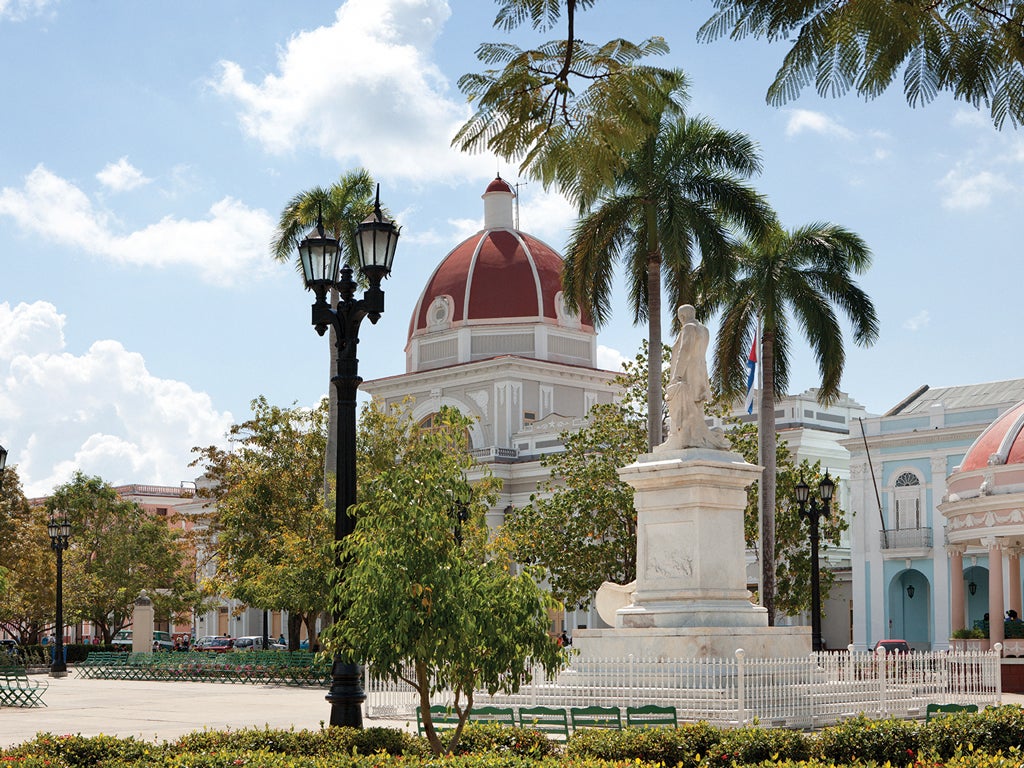
Your support helps us to tell the story
From reproductive rights to climate change to Big Tech, The Independent is on the ground when the story is developing. Whether it's investigating the financials of Elon Musk's pro-Trump PAC or producing our latest documentary, 'The A Word', which shines a light on the American women fighting for reproductive rights, we know how important it is to parse out the facts from the messaging.
At such a critical moment in US history, we need reporters on the ground. Your donation allows us to keep sending journalists to speak to both sides of the story.
The Independent is trusted by Americans across the entire political spectrum. And unlike many other quality news outlets, we choose not to lock Americans out of our reporting and analysis with paywalls. We believe quality journalism should be available to everyone, paid for by those who can afford it.
Your support makes all the difference.Cuba, the largest of the Caribbean islands, has a growing tourism industry, targeting three million visitors before the end of 2014 and boasting more than 65,000 hotel rooms at present. Varadero, Cayo Largo, Cayo Coco and Cayo Guillermo, as well as Guardalavaca and Pesquero, are its most important beach resorts, while Havana, Santiago de Cuba, Camagüey, Santa Clara, Trinidad and Cienfuegos are Cuba’s most visited cities.
The ‘key to the Gulf’, as it is also known, is not only sun and sand but also a nation with a rich history and a melting pot where cultures from Spain, Africa and many other corners of the world converge. It was first discovered by Europeans on 28 October 1492, when Christopher Colombus landed on the northeastern coast of Cuba just a few miles off Guardalavaca and Playa Pesquero, now two of the island´s best tourist resorts. During the first years, seven villages were founded: Baracoa, Bayamo, Trinidad, Sancti Spíritus, Santiago de Cuba, Puerto Príncipe, and Havana. “This is the most beautiful land that human eyes have ever seen,” said Columbus on his arrival, and in that respect little has changed in the 21st century.
Cuba is a showcase for a great combination of natural attractions and historical and cultural sites. It is home to over 300 natural beaches, located both in the main island and on surrounding islets, with Varadero being the most famous. It’s also a paradise for those looking for the ultimate tropical adventure: scuba diving aficionados can experience one of the best-preserved coral reefs in the world around the Jardines del Rey region in north-central Cuba, as well as other sites where the wrecks of long-sunken vessels can be admired.
Cuba boasts nine Unesco World Heritage sites, including the capital’s Old Havana in the west; Trinidad, the best-preserved colonial city in the Caribbean, located in the middle of the country; and the San Pedro de la Roca Castle in Santiago de Cuba. Cuba is also home to over 300 protected areas, and six of these have been declared World Biosphere Reserves by Unesco: Guanahacabibes Peninsula, Sierra del Rosario and Ciénaga de Zapata in the west; Buenavista in central Cuba; and Baconao Park and Cuchillas del Toa in the east.
The island’s music is treasured as an important cultural tradition. Cuba’s music, the cradle of son and salsa, can be heard in every town, every street and especially in vibrant Havana, where the visitor can dance to tunes of the Buena Vista Social Club, listen to a jazz concert by Grammy Award-winning pianist Chucho Valdés, or enjoy the performance of its world-famous National Ballet.
For anyone who visits it, Cuba is a postcard come to life. The old American cars from the fifties, the friendliness of its people and a distinct combination of nature, cuisine, history and culture all combine to make it a magnificent destination for tourists from all over the world eager to bring home a bit of Caribbean flavour.
Join our commenting forum
Join thought-provoking conversations, follow other Independent readers and see their replies
Comments